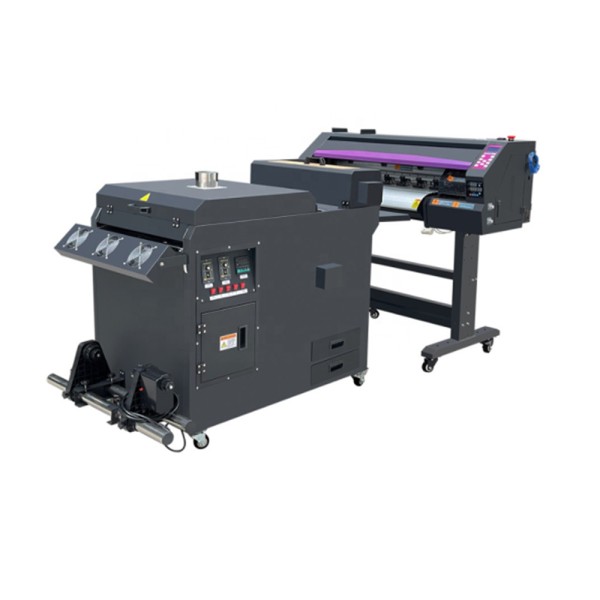DTF Printing Demystified: Every Little Thing You Required to Understand About Direct-to-Film
DTF Printing Demystified: Every Little Thing You Required to Understand About Direct-to-Film
Blog Article
Understanding DTF Printing: Tips and Tricks for Getting Vibrant and Durable Prints
In the globe of textile printing, accomplishing long lasting and vibrant prints is a desirable skill that can raise the top quality of your output. From picking the right products to fine-tuning print setups and perfecting post-printing finishing techniques, there are many factors that can affect the result of your prints.

DTF Printing Fundamentals
For those brand-new to the globe of textile printing, recognizing the principles of DTF printing is crucial to understanding this innovative method. Direct to Movie (DTF) printing is a contemporary approach that involves moving designs from a special film onto numerous fabrics utilizing a heat press. Unlike traditional approaches like screen printing, DTF offers benefits such as dynamic colors, complex outlining, and the capacity to publish on diverse products like cotton, polyester, and blends.
The procedure starts by printing the style on an unique DTF film utilizing a suitable printer with CMYK or CMYKW ink sets. When the style is printed, it is after that cured with a warmth press to produce a resilient and resilient print. DTF printing is understood for its ability to duplicate intricate layouts with high precision and color accuracy, making it a prominent option for businesses wanting to produce custom-made clothing, marketing products, and much more.
Selecting the Right Products

Similarly crucial is the choice of the sticky powder. The adhesive powder serves as a bonding representative in between the printed design and the fabric, so it should have solid adhesion residential properties to ensure a long-lasting and long lasting transfer. Various materials might call for various kinds of adhesive powders, so it is vital to match the powder to the fabric type for optimal outcomes - DTF Printing. find this By meticulously choosing the ideal products for DTF printing, printers can boost the top quality, vibrancy, and long life of their prints.
Enhancing Print Setups
When aiming to accomplish the ideal outcomes in DTF printing, thorough attention to optimizing print settings is essential for making sure premium and specific transfers onto fabrics. One essential aspect to think about when enhancing print setups is the resolution.
While increasing the rate can boost efficiency, it might compromise the last print's quality and shade saturation. Experimenting with different rates and observing the outcomes can help establish the optimal setup for each print work.
In addition, fine-tuning color accounts and making sure proper shade management are crucial for accomplishing exact and regular shades across various prints. By calibrating shade settings and profiles, printers can lessen shade variances and generate consistent outcomes, enhancing the total print quality and client satisfaction.
Preparing Artwork for DTF Printing
Convert the art work to CMYK shade mode to make certain additional info that the colors translate precisely from screen to print. Keep in mind to mirror the last layout prior to publishing to make sure that it moves appropriately onto the garment. By adhering to these actions and paying close attention to the information, you can prepare art work that is maximized for vivid and long lasting DTF prints.
Post-Printing Finishing Strategies
Carrying out effective post-printing finishing strategies is crucial to improving the longevity and visual allure of DTF prints on fabrics. When the printing procedure is total, using warm to the published layout is important.
As soon as the film is removed, the print may require additional curing time to additionally set the ink right into the material. This action aids enhance the washability and sturdiness of the print, ensuring it can stand up to multiple wash cycles without fading or fracturing.
Additionally, trimming any kind of excess movie around the style can give the final print a expert and clean appearance. Making the effort to effectively end up DTF prints post-printing can significantly affect the general top quality and longevity of the textile style.

Conclusion
In conclusion, grasping DTF printing requires a complete understanding of the essentials, selecting proper materials, optimizing print setups, preparing art work efficiently, and making use of post-printing ending up strategies. By following these tricks and ideas, one can accomplish vivid and resilient prints that satisfy their desired top quality standards. Regular technique and interest to information are important in accomplishing effective results in DTF printing.
From selecting the best materials to fine-tuning print settings and developing post-printing ending up strategies, there are many elements Clicking Here that can affect the result of your prints. Unlike traditional methods like display printing, DTF supplies benefits such as dynamic shades, detailed describing, and the ability to print on diverse materials like cotton, polyester, and blends.
Once the style is printed, it is after that treated with a warm press to develop a resilient and long-lasting print.When aiming to achieve the finest outcomes in DTF printing, precise attention to maximizing print settings is important for making certain top quality and accurate transfers onto textiles.In final thought, understanding DTF printing needs a comprehensive understanding of the basics, selecting proper materials, maximizing print settings, preparing art work successfully, and making use of post-printing ending up strategies.
Report this page